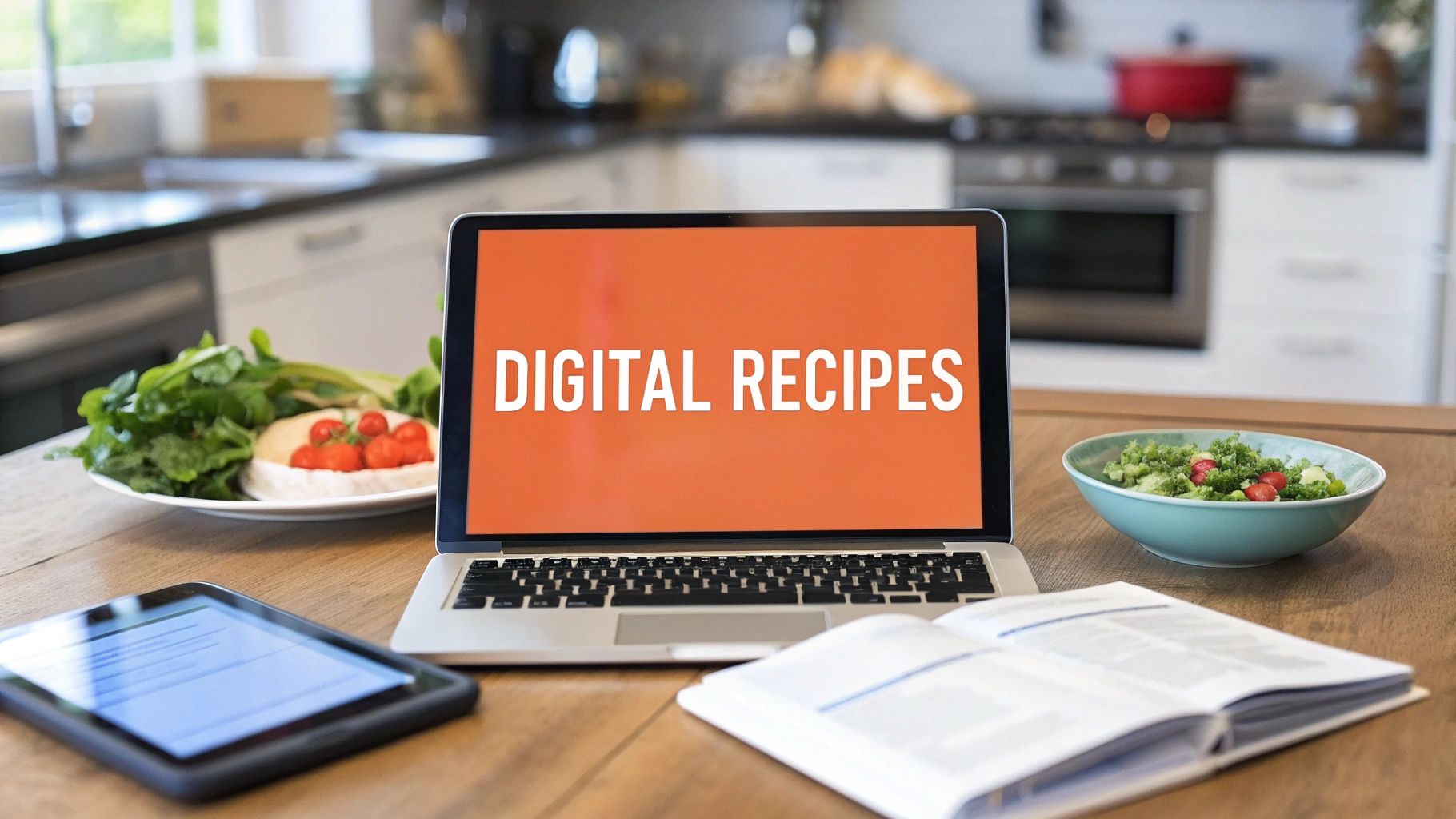Why Traditional Recipe Methods Are Failing Modern Cooks
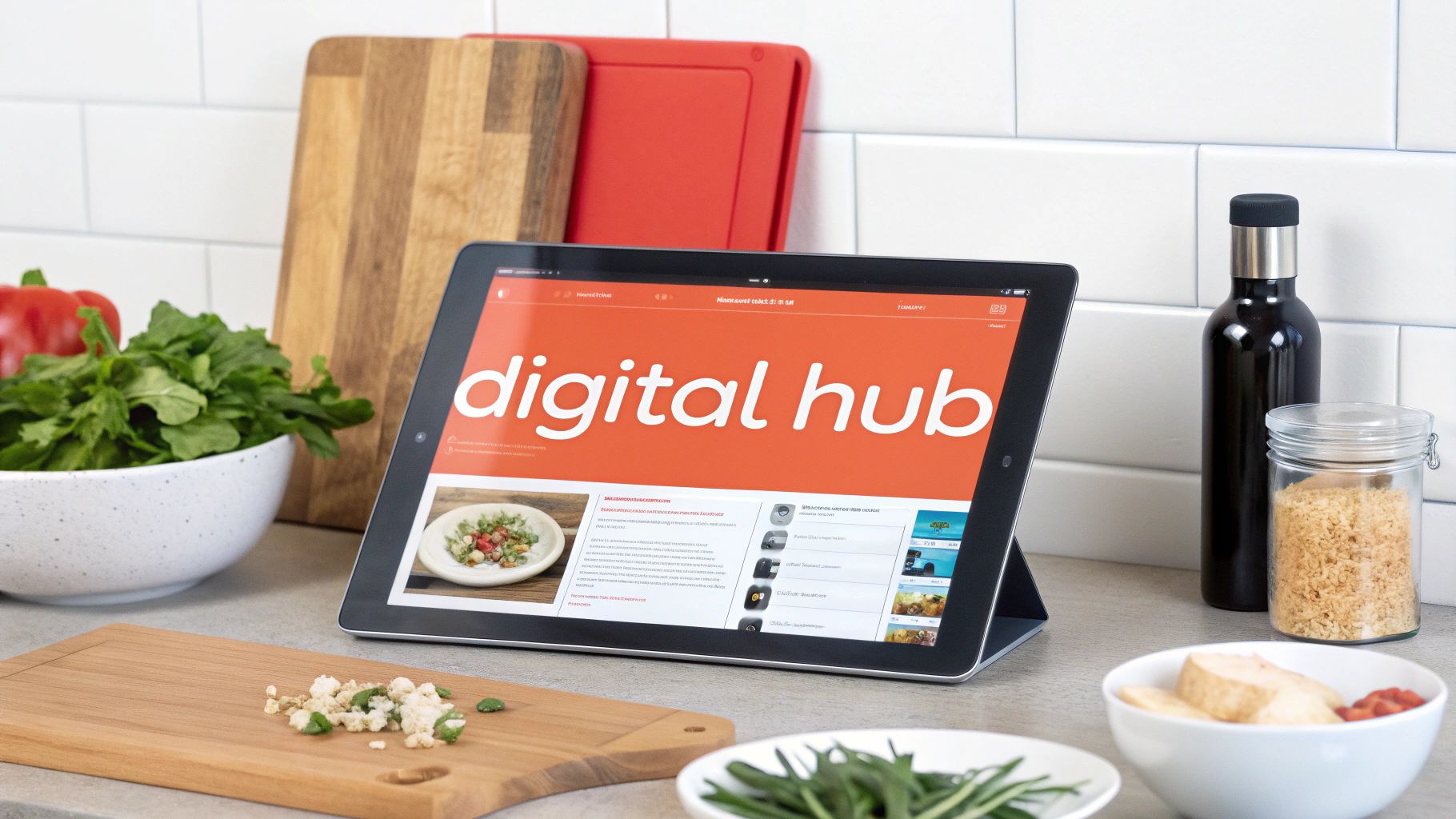
Let's be honest, that overflowing recipe box, the scattered cookbooks, and countless recipe screenshots on your phone aren't exactly inspiring. They represent a disorganized system struggling to meet the needs of today's cooks. This isn't just about a tidy kitchen; it's about making cooking enjoyable and stress-free. This section explores why traditional recipe organization methods are no longer working.
The Problem of Disorganization
One of the biggest challenges with traditional methods is disorganization. Finding a specific recipe can feel like a scavenger hunt. This leads to wasted time, frustration, and a decreased desire to cook. Imagine trying to locate your grandmother's famous cookie recipe in a pile of stained index cards. The search alone can take the joy out of baking. This disorganization also impacts ingredient lists, causing confusion and extra trips to the grocery store.
Adapting to Modern Needs
Traditional methods also lack flexibility. Scaling recipes for different serving sizes often requires tricky math. They don't easily accommodate dietary restrictions or allow you to search quickly based on ingredients you have on hand. This inflexibility is a major hurdle for people with dietary needs or busy schedules. It makes adapting recipes to your lifestyle a real challenge. The recent rise in home cooking presents a chance for better recipe management. In recent years, nearly half of American adults report cooking more frequently at home. Online recipe platforms have seen increased traffic, reflecting this trend. However, even with online access, organizing and personalizing these recipes remains difficult. Advancements in data science and natural language processing offer solutions for personalized recipe generation. Learn more about this topic here. This underscores the growing need for a simpler system for accessing and customizing recipes.
The Digital Advantage
Finally, consider the vast number of recipes available online. Traditional methods simply can't keep up with this constantly expanding digital world of culinary inspiration. Saving and organizing these recipes using traditional methods is almost impossible due to the limits of physical storage. Electronic recipe organization is becoming essential, giving cooks easy access to a world of flavors. Electronic organization creates a central hub for storing and managing recipes from various sources. This simplifies cooking workflows and eliminates common frustrations like lost recipes and ingredient confusion, leading to reduced stress and a renewed love of cooking.
Finding Your Perfect Electronic Recipe Organization System
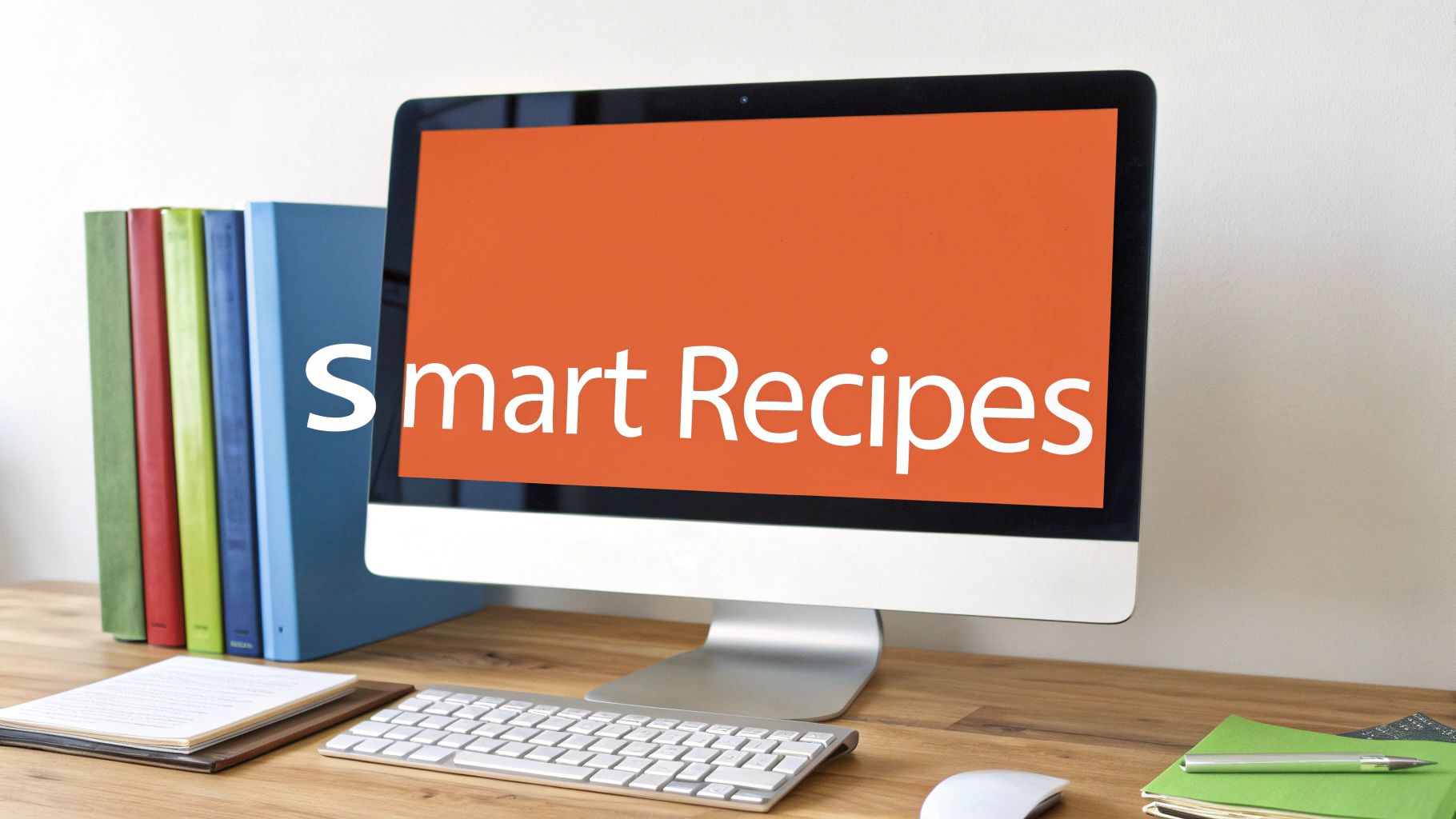
The sheer number of electronic recipe organization tools can be overwhelming. Numerous apps, software, and websites promise to revolutionize your kitchen. But which one is the perfect fit for you? The ideal system depends on your individual cooking style, how comfortable you are with technology, and what you need from a recipe organizer. This section will help you navigate the process of finding the perfect platform.
Key Features To Consider
When choosing an electronic recipe organization system, start by identifying the features that are most important to you. Consider your current cooking habits and what aspects frustrate you. Do you struggle to scale recipes? Is finding a specific dish a constant battle? These pain points should guide your search.
- Ingredient Scaling: Resize recipes for different serving sizes without the need for manual calculations.
- Nutritional Analysis: Track calories, macros, and micronutrients to support your dietary goals.
- Meal Planning Integration: Create weekly meal plans and shopping lists directly from your recipes.
- User Interface: A clean and easy-to-use interface is crucial for a positive experience.
- Photo Management: Save and organize pictures of your dishes for inspiration and documentation.
- Search Functionality: Quickly find recipes using keywords, ingredients, or other search terms.
Tailoring Your Choice To Your Cooking Style
Every cook has unique needs. A professional chef requires different tools compared to a busy parent. A chef might prioritize inventory management, while a parent might focus on quick, family-friendly meals. Health-conscious cooks will value detailed nutritional information. Finding a system that aligns with your lifestyle is key.
For a comprehensive overview of recipe organization apps, check out our guide: apps for organizing recipes.
Assessing User Experience and Cost
A positive user experience is essential. A complicated system, even with extensive features, can quickly become unused. Look for platforms that are easy to learn and navigate. Consider your budget and the value of a premium subscription. Some platforms offer limited free versions with key features only available with a paid upgrade. User reviews can provide valuable insights into the actual experiences of other cooks.
The Growing Market of Recipe Management
The recipe management market is booming. The global Recipe Management System market is predicted to reach USD 1624.5 million by 2024. North America holds the largest market share, at over 40% of global revenue (USD 649.80 million in 2024). This market is projected to grow at a CAGR of 8.0% between 2024 and 2031. This growth is partially driven by foodservice businesses using these systems to streamline operations and menu planning. For more details, see the market analysis here. This significant investment highlights the growing focus on efficient and user-friendly recipe management tools.
To help you navigate the many choices, we've compiled a comparison of popular electronic recipe organization systems:
Top Electronic Recipe Organization Systems Comparison
A detailed comparison of leading electronic recipe organization platforms highlighting key features, pricing, and user experience.
| Platform | Key Features | Price Point | Best For | Limitations |
|---|---|---|---|---|
| Recify | Recipe import, meal planning, shopping list generation | Free and paid options | Home cooks, families | Limited offline access |
| Paprika | Recipe clipping, pantry management, grocery lists | One-time purchase | Serious home cooks | Can be complex to learn |
| Plan to Eat | Drag-and-drop meal planning, recipe import, shopping lists | Subscription | Meal preppers, families | Requires internet access |
| Mealime | Personalized meal plans, dietary restrictions, grocery delivery | Free and paid options | Busy individuals, health-conscious eaters | Limited recipe customization |
This table offers a quick overview of some popular options, highlighting their strengths and weaknesses. Researching each platform individually is recommended to determine which best suits your specific needs.
Making The Right Choice
The best electronic recipe organization system is the one that helps you cook more efficiently and enjoyably. By considering key features, your cooking style, user experience, and cost, you can make an informed decision. Transform your kitchen into a digitally organized haven. For further guidance, see our article: How to choose the best recipe management app. Finding the right system is less about following trends and more about choosing tools that truly enhance your cooking experience.
Building Your Personal Digital Recipe Collection
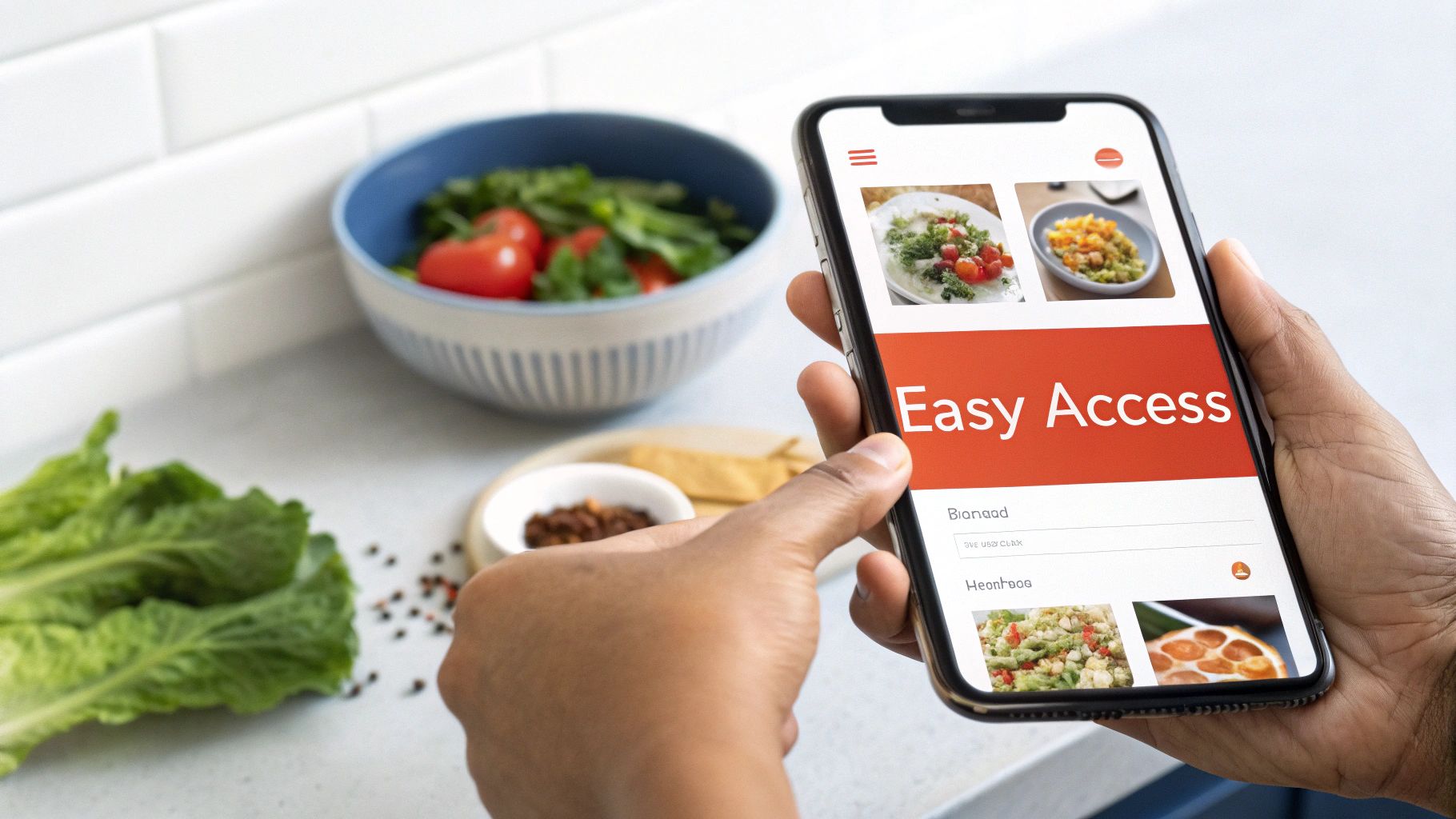
Successfully managing your digital recipe collection is more than just storing files. It's about creating a personalized system that works for you. Think of it as your own evolving digital cookbook, readily searchable and easy to adapt. This section will guide you through building a truly valuable recipe resource.
Digitizing Your Existing Recipes
The first step is bringing your current recipes into the digital realm. There are various ways to do this, depending on your tech comfort level and the current state of your recipes. Some might prefer quick photos, while others might choose to meticulously type everything out. This initial step creates the foundation for a well-organized collection.
- Photo Capture: Quickly snap pictures of handwritten recipe cards or cookbook pages. This is perfect for preserving those handwritten notes and family favorites.
- Scanning: Use a scanner for higher quality digital copies than photos, ensuring clear text and images.
- Transcription: Type recipes into your chosen digital platform. This method allows for easy editing and robust search capabilities.
- Recipe Clipping Tools: Utilize browser extensions or apps designed to save recipes directly from websites. This is invaluable for collecting recipes you find online.
Organizing Your Digital Recipe Library
Once your recipes are digitized, a clear organizational strategy is essential. This is more than simple categorization; it’s about creating a system you'll actually use. Check out our article on how to categorize recipes for more in-depth guidance. Effective organization turns your collection into a powerful kitchen tool.
- Tagging: Use keywords (like "chicken," "Italian," or "dinner") to tag recipes based on ingredients, cuisine, or meal type. This makes it easy to search for exactly what you want.
- Categorization: Group similar recipes together using categories like "Breakfast," "Dinner," "Desserts," or "Weeknight Meals."
- Naming Conventions: Consistent naming is crucial. Use specific names like "Grandma's Chocolate Chip Cookies" instead of generic titles like "Cookies" for easy searching.
Preserving Personal Touches
Cooking is often about adding your personal touch to recipes, and your digital system should reflect this. Those unique modifications and cooking notes are what truly personalize a recipe.
- Notes Section: Most digital recipe platforms include a notes section. Use this to record ingredient substitutions, cooking time adjustments, or serving suggestions.
- Photo Annotations: Some apps even allow you to annotate photos of your dishes, visually documenting your process and variations.
The intersection of food and technology has even impacted culinary history. Projects like The Sifter and CoReMA are using technology to create structured databases of historical recipes, including metadata on ingredients, equipment, and techniques. These databases aim to improve the accessibility and analysis of culinary data. Learn more about this fascinating field here. This highlights the potential of digital recipe organization to not just manage your personal recipes, but to contribute to a broader understanding of culinary knowledge. By carefully curating your digital collection, you're creating a valuable resource for future meals and culinary explorations. You might also be interested in this article: How to master recipe organization with Recify.
Unlocking Advanced Electronic Recipe Features You're Missing
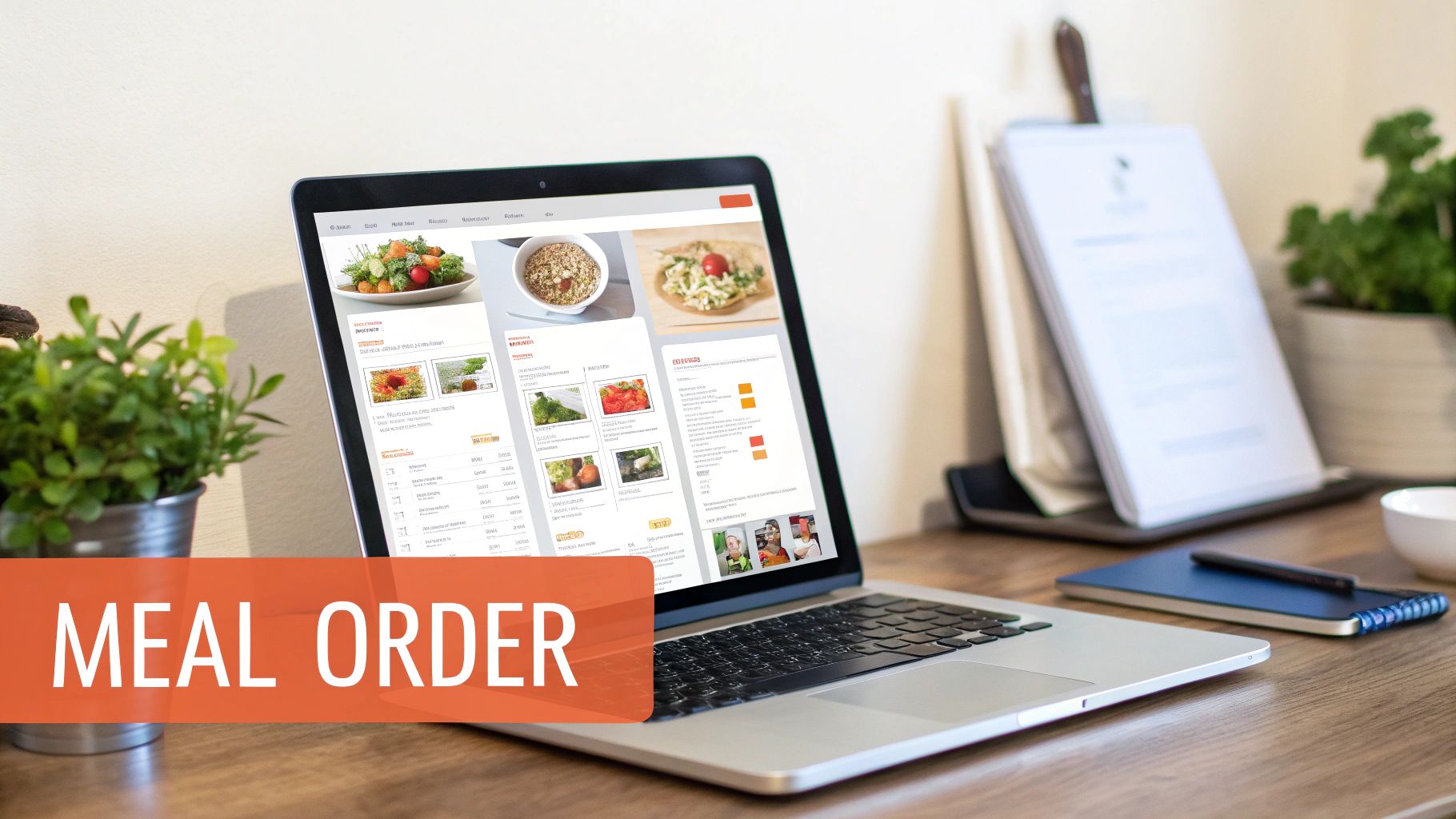
Electronic recipe organization goes beyond simply storing recipes digitally. It's about leveraging technology to improve your overall cooking experience. While basic organization is helpful, many platforms offer advanced features that can truly change how you interact with your recipes. Let's explore some of these useful tools.
Intelligent Search: Find What You Need, Instantly
Imagine finding recipes instantly based on what you have in your fridge, your dietary restrictions, or even how much time you have to cook. Intelligent search functions make this a reality. Instead of flipping through cookbooks or scrolling through countless webpages, these systems quickly pinpoint recipes matching your specific criteria. This translates to less searching and more cooking.
For example, searching for "chicken and broccoli" and filtering for "low-carb" will quickly generate a list of appropriate recipes. This targeted approach simplifies meal planning and helps you discover new dishes based on your preferences.
Effortless Scaling: No More Mental Math
Recipe scaling is invaluable for anyone cooking for different numbers of people. These tools automatically adjust ingredient quantities based on your desired serving size, eliminating guesswork and potential errors from manual calculations. This is especially helpful for large gatherings or when adapting recipes for smaller households.
Additionally, some platforms let you convert between metric and imperial units, simplifying the cooking process even further. This ensures accurate measurements regardless of the original recipe format, making cooking more convenient.
Nutritional Analysis: Meal Planning with Insights
Many electronic recipe platforms now offer nutritional analysis, providing detailed information on calories, macronutrients, and micronutrients. This allows you to make informed choices that align with your dietary goals. This is particularly useful for managing specific dietary needs or tracking your food intake.
Having nutritional information readily available empowers you to create balanced and nutritious meals. It takes the guesswork out of meal planning and helps you maintain a healthy lifestyle.
Seamless Integration: A Connected Cooking Ecosystem
Some platforms extend beyond individual recipe management by integrating with other digital tools. This creates a seamless cooking ecosystem connecting recipes to smart kitchen appliances, shopping lists, and meal planning apps.
For example, you can send a recipe directly to your smart oven, automatically create a grocery list from your meal plan, or even order ingredients online with a single click. This integration streamlines the entire cooking process, from inspiration to execution.
Rediscovering Forgotten Favorites and Reducing Food Waste
These advanced features can also help reduce food waste. By knowing precisely what ingredients you have and which recipes you can make, you're less likely to let food spoil. Plus, the enhanced search functionality helps you rediscover "lost" recipes buried in your collection.
Imagine finding a forgotten family favorite simply by searching for "cranberries" or "Thanksgiving." These advanced tools help you maximize your ingredients and rediscover the joy of cooking. They offer a powerful way to manage your recipes and enhance your culinary adventures.
Real-World Electronic Recipe Organization Workflows
Electronic recipe organization isn't just about having digital files. It's about building a system that truly improves your cooking process. This section explores how different cooks use electronic recipe organization in their daily lives. We'll look at workflows adaptable to specific cooking styles and lifestyles.
Meal Planning for Busy Parents
Busy parents know the struggle of finding time to plan meals and shop for groceries. Electronic recipe organization offers tools to address these challenges.
- Workflow: Start by saving recipes from blogs, social media, or websites using an app like Recify. Search for recipes based on available ingredients or dietary restrictions. Then, create a weekly meal plan within the app, automatically generating a shopping list.
- Tools: Recify, AnyList, MealBoard
- Benefits: Save time by automating meal planning and grocery list creation. Reduce the mental load associated with meal management.
Managing Recipe Inspiration for the Culinary Enthusiast
For those constantly seeking new recipes, electronic organization can streamline capturing and categorizing inspiration.
- Workflow: Save interesting recipes to Recify using browser extensions or by directly entering the URL. Tag recipes with relevant keywords (e.g., "Italian," "vegetarian," "summer"). Create collections for specific cuisines, occasions, or dietary needs. Regularly review your collection for future meals.
- Tools: Recify, Evernote, Pinterest
- Benefits: Simplifies saving recipes from various sources. Makes it easier to discover new recipes based on your interests.
Coordinating Cooking Schedules for Meal Prep Enthusiasts
Meal prepping requires careful planning. Electronic recipe organization provides the framework to manage this process.
- Workflow: Select recipes for the week and adjust them to your desired portion sizes using a recipe management app. Create a detailed shopping list, organized by grocery store sections. Prep ingredients in advance, storing them in labeled containers. Schedule cooking times for each meal component.
- Tools: Recify, Paprika, MealPrepPro
- Benefits: Streamlines bulk cooking and ingredient preparation. Reduces time spent on daily cooking. Minimizes food waste by planning precisely.
Health-Focused Cooking with Nutritional Data
For those prioritizing health, electronic recipe organization offers tools beyond simple recipe storage.
- Workflow: Choose recipes with detailed nutritional information within the app. Track calories, macros, and micronutrients for each meal. Adjust recipes based on dietary needs, using ingredient scaling and substitutions. Generate reports to monitor your nutritional intake.
- Tools: Recify, MyFitnessPal, Lose It!
- Benefits: Enables informed food choices. Supports specific dietary plans. Provides insights into the nutritional content of meals.
To illustrate these strategies, the table below provides a quick overview of different workflows.
Electronic Recipe Organization Workflow Examples
| Scenario | Workflow Steps | Tools Used | Time-Saving Benefits |
|---|---|---|---|
| Busy Parent | Save recipes, search by ingredients, create a meal plan, generate a shopping list | Recify, AnyList | Automates meal planning and shopping |
| Culinary Enthusiast | Clip recipes, tag with keywords, create collections, review regularly | Recify, Evernote, Pinterest | Simplifies saving and discovering recipes |
| Meal Prep Enthusiast | Scale recipes, create a detailed shopping list, prep ingredients, schedule cooking times | Recify, Paprika, MealPrepPro | Streamlines bulk cooking and ingredient prep |
| Health-Focused Cook | Choose recipes with nutritional data, track intake, adjust recipes as needed | Recify, MyFitnessPal, Lose It! | Enables informed choices about nutrition |
These examples demonstrate the practical benefits of electronic recipe organization. By adapting these workflows to your needs, you can transform your cooking experience. Enjoy a more organized and less stressful time in the kitchen.
Overcoming Common Electronic Recipe Management Hurdles
Even with the best intentions, managing digital recipes can be tricky. From inconsistent formatting to technical glitches, this section addresses common hurdles and offers practical solutions based on real user experiences. These insights will help you navigate the sometimes bumpy road of electronic recipe organization.
Taming Inconsistent Recipe Formats
One frequent frustration is dealing with inconsistent recipe formats. Importing recipes from different websites, blogs, or even cookbooks can create a disorganized jumble. Some recipes might be heavily formatted with images and ads, while others are simple text. This makes it difficult to create a uniform and easily searchable recipe collection.
For example, a recipe from a blog might include lengthy stories or embedded videos, while a cookbook recipe might be a concise list of ingredients and instructions. The key is finding tools that can clean up formatting and present recipes consistently. Recify, for instance, uses AI to extract key information and standardize recipe formatting.
Recovering From Sync Failures and Data Loss
The fear of losing your precious recipe collection due to a sync failure or data corruption is a valid concern. This is especially true for those relying heavily on cloud-based storage. Developing a backup strategy is critical.
- Regular Backups: Regularly back up your recipe data to a separate location, such as a local hard drive, an external storage device, or a different cloud service.
- Export Options: Choose a platform that lets you export your recipes in a standard format, like a CSV or PDF file. This gives you a portable copy of your data.
This provides a safety net if anything goes wrong with your primary storage. Regularly backing up your recipes provides peace of mind and protects your valuable culinary knowledge.
Managing Duplicate Recipes
As your digital recipe collection grows, duplicate recipes can become a nuisance. Accidentally saving the same recipe from multiple sources clutters your library and makes searching less efficient. Implementing a system for identifying and merging duplicates is essential.
- Deduplication Tools: Some recipe management apps offer built-in deduplication features that automatically flag potential duplicates.
- Manual Review: Periodically review your collection and manually merge or delete duplicate entries. Be mindful of any personal notes or variations you've added to different versions.
This helps keep your collection streamlined and avoids unnecessary redundancy. Managing duplicates effectively keeps your recipe library organized and easy to navigate. You might be interested in: How to master recipe organization with the best recipe management app.
Digitizing Handwritten Recipes
Those cherished handwritten family recipes often present the biggest digitization challenge. Faded ink, unique handwriting, and non-standard formats can make accurately capturing a recipe's details difficult.
However, a combination of methods can help preserve these culinary treasures:
- High-Resolution Photos: Take clear, well-lit photos of the recipes.
- Transcription: Manually type the recipes into your digital platform.
- Optical Character Recognition (OCR): Use OCR software to convert scanned images of handwritten text into editable digital text.
These methods preserve family recipes while making them accessible and searchable.
Troubleshooting Technical Issues
Occasional software glitches, cross-platform compatibility issues, or changes in technology can disrupt your electronic recipe workflow. Having a plan for addressing these issues can save time and frustration.
- Software Updates: Keep your recipe management software updated to minimize bugs and compatibility problems.
- Community Forums: Check online forums or support communities for solutions to common issues or contact the platform's customer support for assistance.
- Alternative Platforms: Consider how you would transfer your recipes to a different platform if your current one becomes obsolete or unsupported.
This proactive approach ensures your recipes remain accessible, no matter the technical challenges. This provides a sense of security and maintains the long-term viability of your digital recipe collection. Ready to simplify your recipe management? Try Recify, the AI-powered recipe organizer designed to streamline your cooking process. Learn more about Recify and transform your kitchen.
